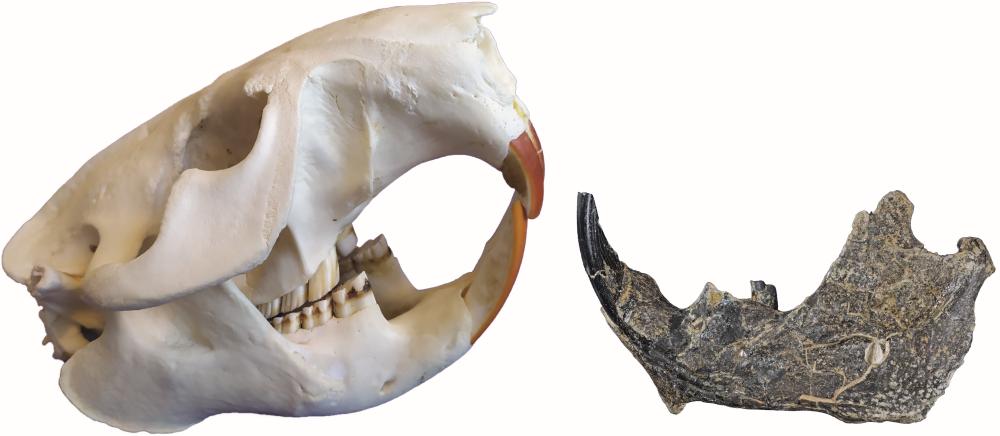For paleontologists, Hammerschmiede in the Allgäu region, the site where the great ape Danuvius was discovered, is a treasure trove unlike any other: more than 140 fossil vertebrate species have been found here. Finds have now also enabled them to outline the way of life and development of an extinct species of beaver: Steneofiber depereti was a little smaller than the modern beaver and settled in the watercourses of southern Germany more than eleven million years ago. From a comparative study of the teeth of the prehistoric rodent, Thomas Lechner and Madelaine Böhme from the Senckenberg Centre for Human Evolution and Palaeoenvironment at the University of Tübingen conclude that the population dynamics and ecology of this species were very similar to that of the modern European beaver.
"Beavers today have strong family ties. Parents and up to two generations of young take care of offspring together," says the excavation supervisor, PhD student Thomas Lechner. Eventually, mature animals leave the clan to seek out their own territory. The ideal home for a beaver is normally on a major river, most of which are already taken, so young adult beavers are forced to travel upstream and settle in smaller waterways. Survival is much harder here and the mortality rate is correspondingly higher in this age group than it is for older animals who occupy an optimal habitat.
"It's unusual to be able to make statements about the mortality and ecology of fossil species - mostly there are only single finds," says Professor Madelaine Böhme. In this case, the site of the find provided the key: "Hammerschmiede, where the find was made, gives detailed insight into two different fossil habitats, a smaller rivulet - the habitat of the great ape Danuvius guggenmosi ‒ and a larger river." This made it possible to compare the mortality of the beavers in the river with those in the stream. "From the two sedimentation zones we could gather the teeth of many beavers which we were able to use to create and compare mortality profiles," explains Lechner.
"The result clearly shows that young adult beavers had a particularly high mortality in the stream area and there were almost no cubs or older animals. By contrast the river had exactly the opposite: there was high mortality among babies and a linear fall in age-related mortality - but young adult beavers seemed to be missing here." Present-day beaver populations reveal exactly the same picture. It seems that, similarly to contemporary examples of the genus, the optimal habitat for Steneofiber depereti was in larger river areas. Moreover, beavers probably also lived in family clans in the Allgäu with ongoing parental care eleven million years ago.
In addition to this, both the ecological similarities of this type of beaver and the morphological characteristics of the teeth indicate that Steneofiber depereti is in the line of the ancestors of today's beaver. "The molars of our fossil beaver have similarities with the forerunner of the contemporary beaver. So this species fits into a small gap between previously clearly distinct species and prove that the beaver has steadily evolved into the present form," explains Lechner.
"The study once again shows how rewarding meticulous excavation is and the unique potential that fossils can have, because not only pure morphology but also statistical age distribution of finds can yield unexpected insights," says Böhme.
Led by Professor Madelaine Böhme from the Senckenberg Centre for Human Evolution and Palaeoenvironment at the University of Tübingen, the excavations at the Hammerschmiede site of the great ape find have been underway since 2011. Since 2020 they have been funded by the Free State of Bavaria.
Publication:
Thomas Lechner, Madelaine Böhme: The beaver Steneofiber depereti from the lower Upper Miocene hominid locality Hammerschmiede and remarks on its ecology. Acta Palaeontologica Polonica 67 (4): xxx-xxx. DOI: https://doi.org/10.4202/app.00997.2022







